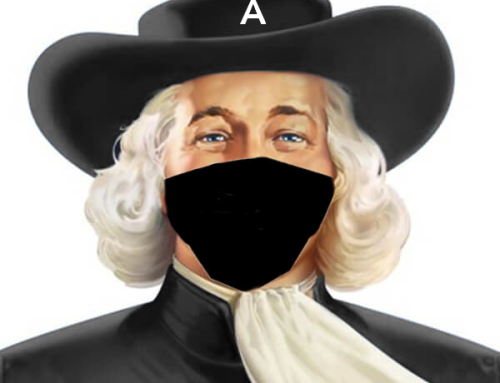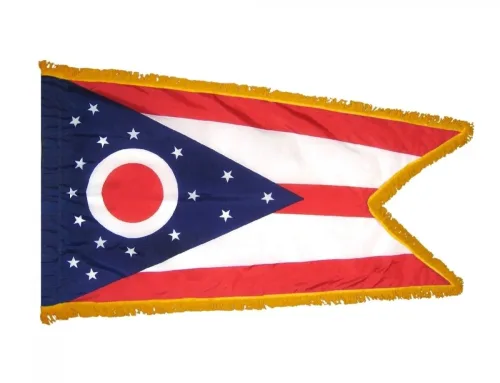Stories on climate change, industrial legacies, and planning for a just future
Last weekend, Detroit and Chicago got a glimpse of our climate future. I watched it unfold in realtime on Twitter—first, warnings of intense rain, then photos and videos of drowning highways and streets that looked like rivers, and post after post describing putrid water, sewage-filled basements, and drowned mementos. It was as clear a picture as you can make of what happens when extreme weather events—made more extreme and frequent by climate change—meet rampant disinvestment and faltering, neglected infrastructure.
Climate change is not a future concern in the Rust Belt. It’s already here, shaping everything from major events to the mundane details of everyday life, alongside environmental disasters like aging infrastructure and the afterlives of industrial byproducts. And its effects are not evenly distributed. They break unevenly across race, class, and geography, as slow violence and environmental racism devastate ‘frontline communities,’ those on the leading edge of disaster.
Belt Magazine has been covering climate and environment in the region for years, from infrastructure and development to water rights to visions of a more just, viable future, and the people already working to make them happen. We collected some of these stories into one central place below. This is not a comprehensive list, but it tries to map the major contours of the relationship between water, heat, race, class, geography, infrastructure, organizing, and more across the region.
It’s not enough to write and read these stories. Nothing changes without sustained, collective action and dramatic investment in matters of health, equity, and infrastructure. But as you find your way in these times of emergency, we hope the pieces below will help you make sense of the challenges, the stakes, the possibilities, and the strategies for ensuring a more just, healthy future.
-Ryan Schnurr, editor
Support independent, context-driven regional writing.
Industrial Legacies
The Rubber Industry’s Toxic Legacy in Akron
By Yanick Rice Lamb
The Poisonous Legacy of Portsmouth’s Gaseous Diffusion Plant
By Kevin Williams
King Coal and the West Virginia Mine Wars Museum
By Carolyn Whelan
Halted Waters: The Seneca Nation and the Building of the Kinzua Dam
By Maria Diaz-Gonzalez
Frackland
By Ted Auch
Landscapes of Disaster
The Oil Pipelines Putting the Great Lakes at Risk
By Ryan Schnurr
When the Dam Broke in Midland, Michigan
By Anna Clark
State of Quakes: The Aftershocks of Ohio’s Fracking Boom
By Nika Knight
Big Ag vs. Lake Erie
By Joey Horan
Life After the Derecho
By Avery Gregurich
Environmental (In)Justice
Detroit Water Shutoffs and a Crisis of Public Health
By Nina Misuraca Ignaczak
How Racism Makes the Weather in Cleveland (and Elsewhere)
By Cid Standifer
Flint Residents are Filling the Void Left by the State
By Jiquanda Johnson
What COVID-19 and the Chicago Heat Wave of 1995 Have in Common
By Kiran Misra
The Unfinished Business of Flint’s Water Crisis
By Anna Clark
Climate and Industry in Everyday Life
Northwest Indiana’s Slow Burn
By Ava Tomasula y Garcia
Chicago’s First Nations Garden
By Pat Nabong
Climate Resilience on Detroit’s East Side
By Nina Ignaczak
Except for the Cancer I’m Fine
By Lori Jakiela
Black Lives and a River Road
By Njaimeh Njie
Rethinking the Crisis
The Future of the Great Lakes
By Anna Clark
Why Pittsburgh Needs the Paris Agreement
By Ed Simon
What to Do with the Chicago River?
By Rachel Havrelock and Kathleen Blackburn
From Wasteland to Wildlife Habitat
By Paul Gordon
What Indiana Dunes National Park and the Border Wall Have in Common
By Ava Tomasula y Garcia
Organizing for the Future
Can a Community Water Lab Restore Trust in Flint?
By Nina Misuraca Ignaczak
Winona LaDuke Takes on Line 3
By Frank Bures
Building the ‘Black to Green’ Pipeline
By Audrey Henderson
West Virginians Are Reinventing Broken Foodways
By Annie Chester
#NoDAPL Fights on in Illinois
By Amelia Diehl ■
Cover image: Midland, Michigan after the failure of the Edenville and Sanford dams. Photo by Ben Tierney.
Belt Magazine is a 501(c)(3) nonprofit organization. To support independent writing and journalism made by and for the Rust Belt and greater Midwest, make a donation to Belt Magazine, or become a member starting at just $5 a month.






